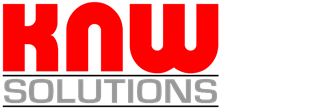Recently we have been asked more and more about the approaches we use to better align learning with the business and how we get more from the Learning Management Systems (LMS). It seems that many organisations have now implemented an LMS of some form or another. They are now trying to leverage the substantial investment in time and resources to get more from their LMS. This is not as easy as it sounds, but following these requests we would like to showcase a number of different approaches that have worked for us over the years to get the best from an LMS.
Our approach to this issue has been built up over a numbers of years. Instrumental in the approach are the thoughts of Dave Urlich as he writes for the Harvard Business Review book “Delivering Results”. Here Urlich argued that traditionally Training and HR measured their results by “Activity”. Now this approach can be very seductive. It is easy to observe and count BUT this is clearly incomplete. We also need to focus on “Results” as well as “Activities”. However, a “Result” focus alone is NOT 100% effective because the methods (“Activities”) used to deliver these “Results” are also important. So a focus on “Results” is critical but you must also monitor the “Activities” of learning.
Linking Learning to the Business
There is a great deal of research that has shown the link between HR/Training and Business Results. Two of the most influential were the studies conducted firstly by The Society for Human Resource Management (SHRM) and CCH and the other being by Mark Huselid out of Rutger University.
The first study evaluated the financial impact of HR/Training practices in 260 firms. Four financial measures were selected for the evaluation. At the end of the study it was found that all four measures increased dramatically with the quality of HR/Training practices. It proved that an internal alignment of Business Strategy, HR/Training Practices and Management Philosophy contribute to business success.
In the second study Huselid looked at how various HR/Training practices impacted on three organisational performance measures (Turnover, Productivity and Financial Results). He found that there was a strong link between good HR/Training practices and lower employee turnover and greater productivity and financial performance in the 968 firms studied. Huselid commented that the magnitude of the return of investment was substantial. One standard deviation increase in good HR/Training practices lead to a 7.05% decrease in turnover plus a 16% increase in productivity. This yielded a financial performance increase of $27,044 in sales, $18,641 in market value and $3,814 per employee.
These studies demonstrate a strong relationship HR/Training investment and Business Results.
This basic relationship is shown above. Now there is always debate about why this relationship exists and how it operates, but it is enough to say that it does. Further discussion on it would be more academic than useful
Now many HR/Training practices will have very little impact on your LMS and your ability to get the most from it. The key here is to put in place practices that STRONGLY link Workplace Performance and Business Performance. In this way an improvement in Workplace Performance (such as learning a new skill) can lead directly to improved Business Performance. The better the practice the tighter the link will be. During our work for a number of organisations we have developed a number of tools and practices that we use that, when implemented properly, directly link Workplace Performance to Business Results. In the next post we will discuss these tools and show you how they can work with any LMS you have and how you can use them to maximise the investment your organisation has made in this resource.

